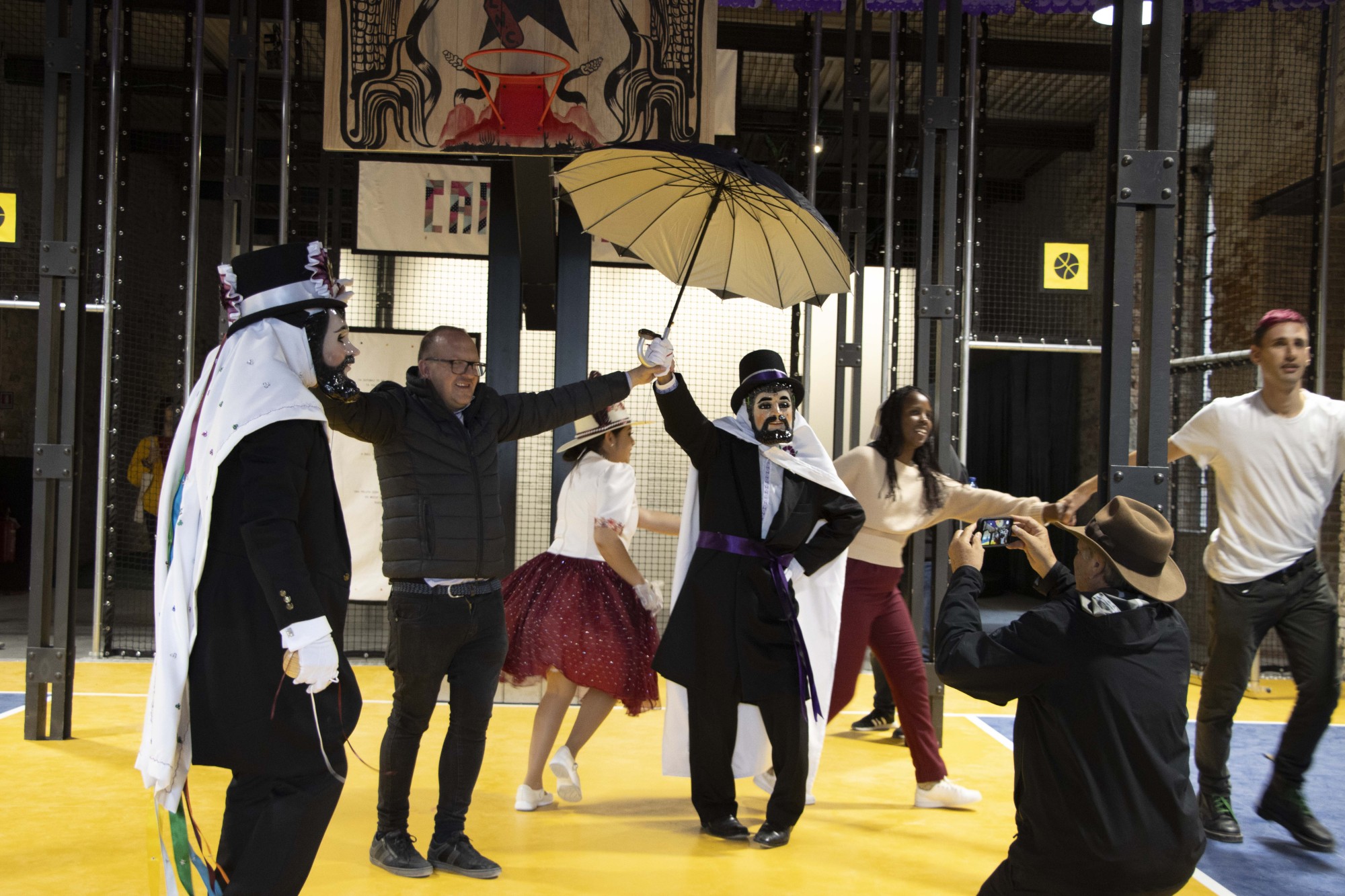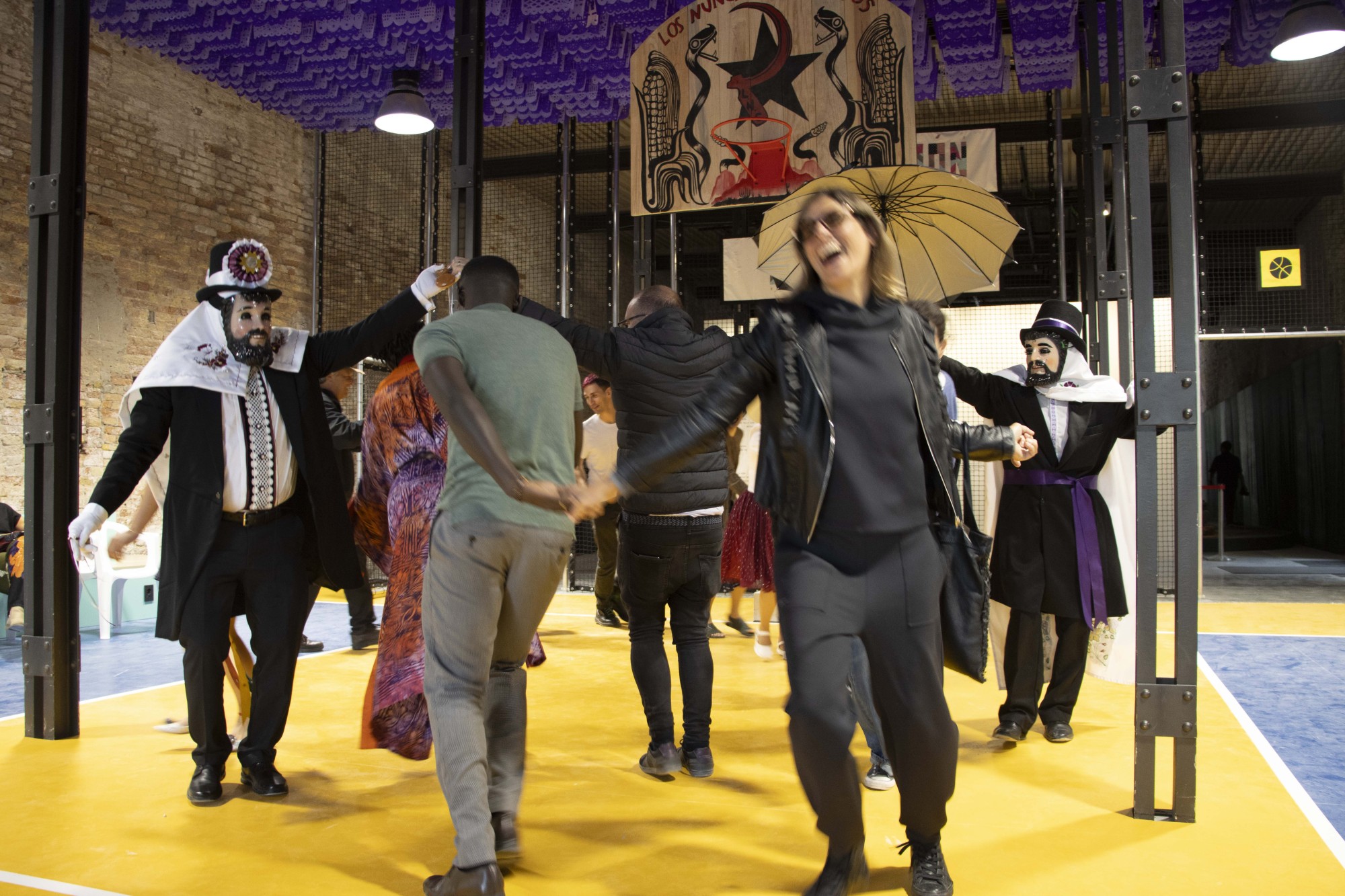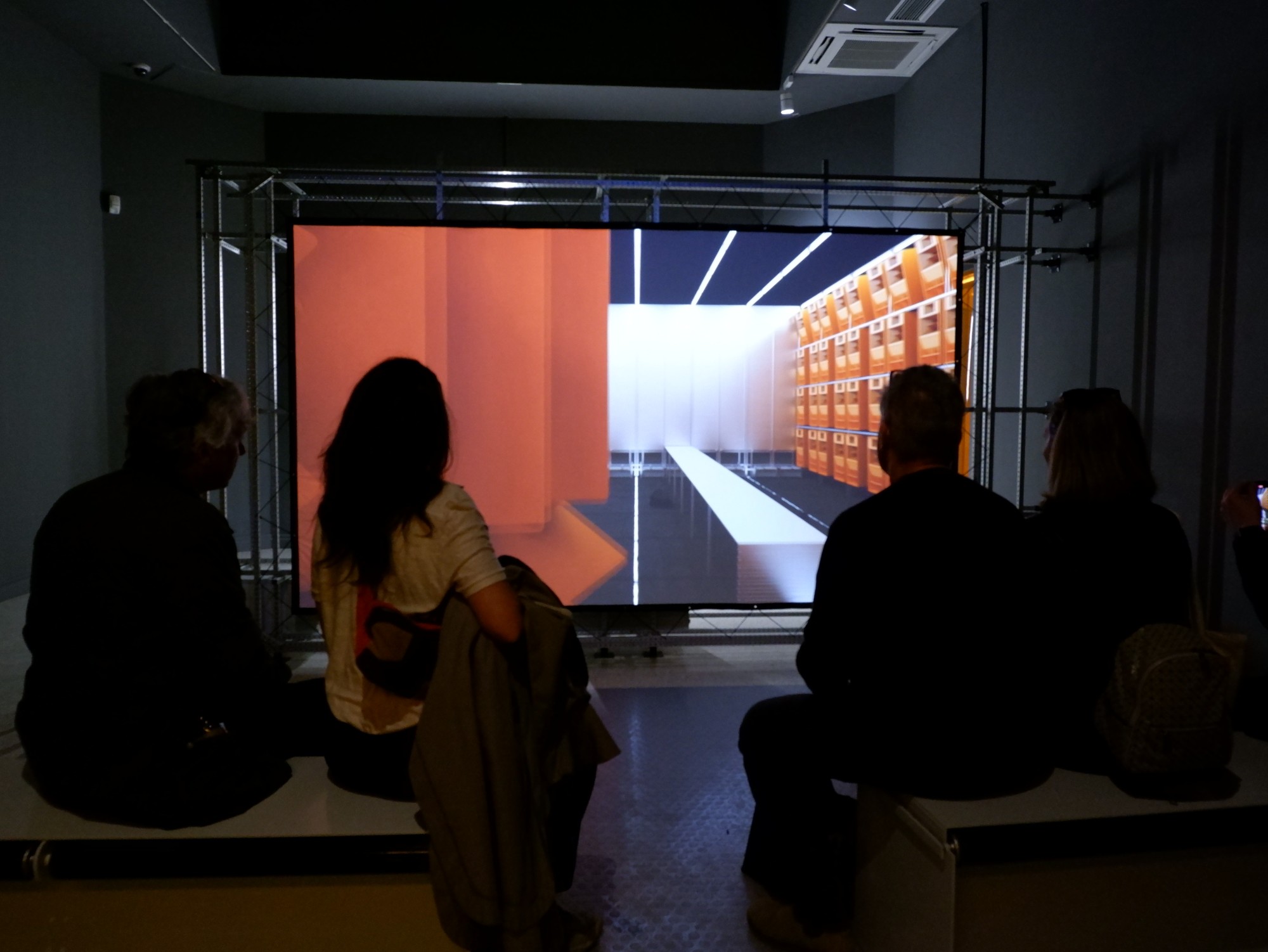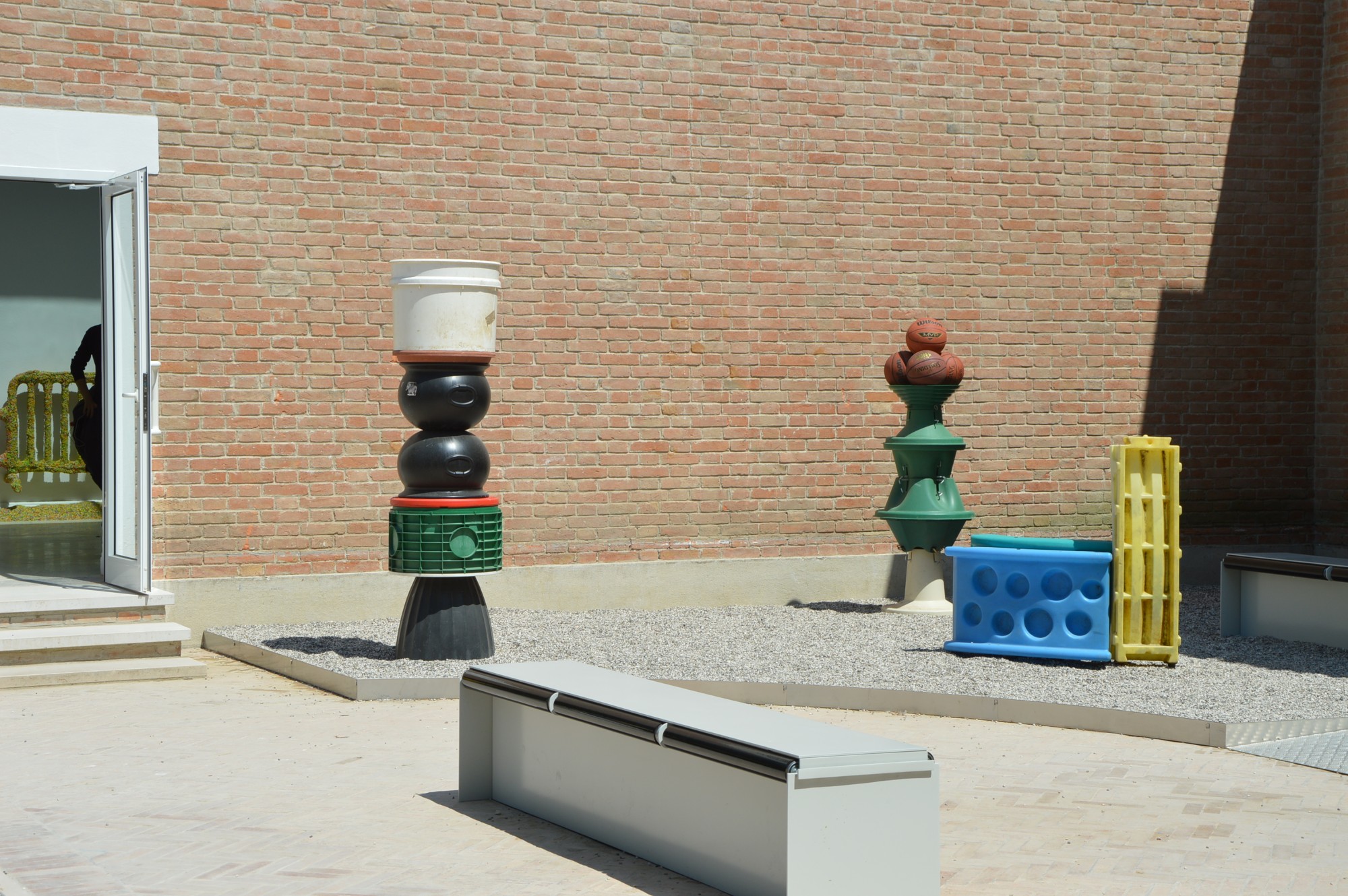Field Notes from the Pluriversity: Reflections on the 18th Venice Architecture Biennale
A Tale of Two PavilionsKarla Andrea Perez
A Tale of Two PavilionsKarla Andrea Perez
Antes de partir lo más importante era pesar las maletas, todo el día estaba planeado alrededor de bajar a la lavandería y pedir de favor que las pesaran. The worst thing that could happen was they’d be over the weight limit, the best scenario would be there’d be space for a few more sueteres, or a roll of Bounty, just in case. (Spoiler alert: they ended up being over.) Al mediodía mi mamá me ayudó a bajar para pedir el gran favor de usar la báscula, since she has connections at the laundromat that we were hoping to exploit. Al entrar el sonido de las máquinas y el olor a jabón que normalmente es rutinario, me recordó a la primera vez que viaje a México con mi hermana. Esa vez pesamos las maletas tres veces teniendo que subir y bajar cada vez. Que alivio cuando nos dimos cuenta que Emma estaba trabajando, amiga de mi mama que me cuidaba de vez en cuando de niña. She’d for sure let us use the scale. We approached her as she was folding a pair of pants, greeting each other with smiles and hugs, getting hit with the usual questions of: “How’s work?” “Are you still in school?” “How’s your sister?” and, of course, “¿Y a donde vas?”As I explained Venice and the Biennale, her eyes welled up. Glancing first at my mother, then me, she said, “Me da mucho gusto, hay que aprovechar las oportunidades,” which of course prompted another hug and a promise to tell her all about it upon my return. It’s not like we hadn’t seen each other in a long time; we live on the same block. Sometimes I’ll do my laundry there if I’m feeling lazy and don’t want to walk three blocks to the next one (my mom has beef with the owner so we’re supposed to boycott this particular facility) but sometimes it feels like forever since we’ve had a meaningful interaction. “Y cuando vas a ir para Mexico?” she asked. We’re always thinking of going back “home.”
In a way I was able to travel to Mexico while on the trip, while also visiting Spain, Brazil, and China all on the same day. At the Biennale you can’t help but feel inside a bubble: it’s both dreamy and threatening, ready to burst without notice. Laboratory of the Future, hopeful, at times confusing, with a heavy undertone of the past. There was a lot of clapping, seemingly endless speeches, and bottomless bottles of champagne accompanied by a glaring lack of food. Juntando las palabras laboratorio y futuro sugiere algo nuevo, explosivo, provocativo, con la expectativa de ideas impactantes. No esperaba encontrarme con temas que retuercen el corazón a diario a mucha gente que no se siente ni de aquí ni de allá. Flipping through the pages of the guidebook, a blur of countries listed in different colors underlined the nationalism and identity politics to which we were subjected, seeing ourselves within these spaces (or not) automatically rooting for our own.
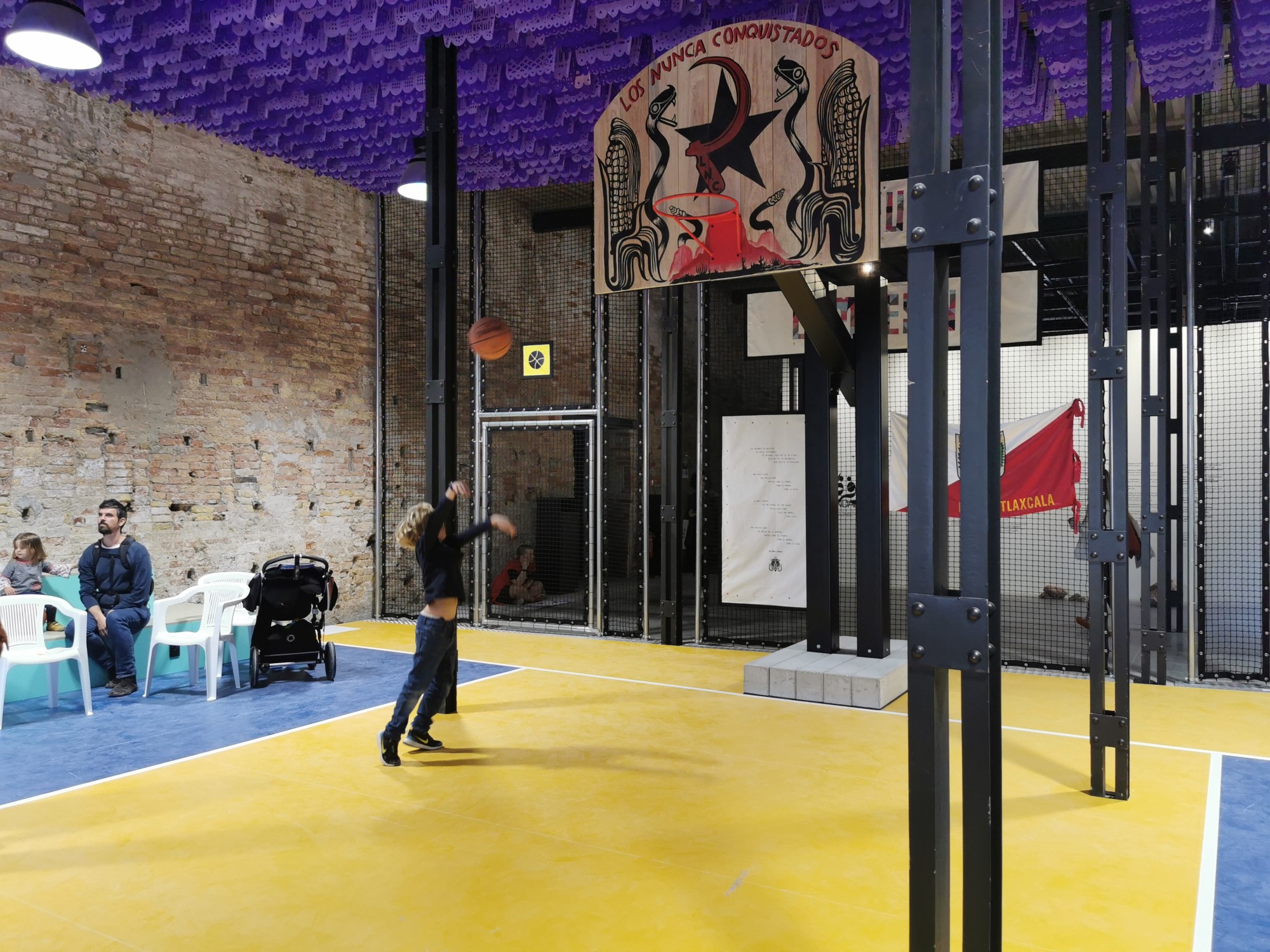
Al entrar al pabellón Mexicano era imposible no reconocer todos los detalles que gritaban México, desde el papel picado to the reinterpretation of Aztec symbols melded with basketball motifs on coasters. I might’ve even caught a glance of pulque circulando entre los invitados. Surrounded by people, comenzó un baile donde Thaily y Daniela (two of the dancers that participated in the opening) orgullosamente bailaban con la bandera de Tlaxcala en medio de la cancha. It was unexpected, being able to see not only the Mexican flag, but the flag of the state my mother is from. What were the chances? First impressions matter, and I was sold. I couldn’t help but keep returning. Rodrigo Escandón Cesarman, an architect at Mexico City’s APRDELESP studio, described the space as a common ground people continuously reinterpret and reclaim: “Nos pareció importante que pasaran cosas acá, que se entendiera la cancha y los distintos usos de la cancha.” Cada vez que regresaba notaba otro elemento que recalcaba este deseo: the plastic lawn chairs were always rearranged in a different way, leaving traces of gathering; while the charging stations encouraged people to use la cancha como home base, to pause, throw a few hoops and select a song from the tracklist. Fue durante una de estas pausas que pude platicar con Felicitas la presidenta municipal de Panotla y Nancy la mayordoma de Amaxac del estado de Tlaxcala. They explained the value of the basketball courts in their communities as places for politics, parties, and, of course, basketball (con equipos competitivos). I couldn’t help but mention that my mom es una tlaxcalteca. “¿De qué parte?” me preguntaron.
To my dismay I couldn’t remember, and was only able to offer up small details like, it’s one of the smallest regions, it’s near Puebla—to which one of the dancers, who, overhearing our conversation, exclaimed, “Esos son casi todos!” Did I mention I have a terrible sense of direction? I wouldn’t have blamed them if they had dismissed me right then and there, but they didn’t. They collectively called out the names of the different towns, trying to narrow it down. It wasn’t until we had moved on from trying to figure it out that the dancer blurted, “¡Zacatelco!” It’s a good thing we didn’t go in alphabetical order. Hablando con ellos sentí un acojo más allá de la amabilidad, fue fácil y sincero. The space was meant to invoke conversations, reinforce community. Y así fue. Fuera de nuestros países, lejos de nuestras comunidades nos encontramos.
My experience in the United States Pavilion was the opposite. Entering Everlasting Plastics, the exhibition’s title, I caught myself thinking, there's nothing more American than plastic. But also, there's nothing more American than plastic, cue existential dread. Plastic is universal. We’re linked by the bond of knowing we’ve each unwillingly ingested some of this material (unless you choose to slip a Lego when no one is looking). It was harder to find myself in this context, or maybe I simply didn’t want to. Pero quizá es esta responsabilidad de ser universal lo que refleja lo que es ser estadounidense, o por lo menos la fantasía de lo que alguna vez fue. Aquí la invitación no era de sentarse o tocar, era de ver. La comunidad no era tan aparente, but on one chance encounter during the accompanying book launch, I met Simon Anton, one of the featured artists. This serendipitous meeting brought back the feelings I had experienced in the Mexican Pavilion–warmth, community, connection.
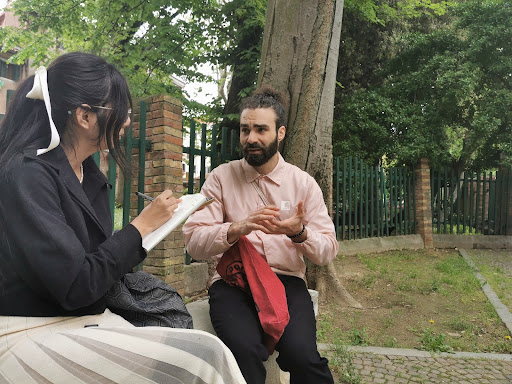
We started our platica with, “Do you have time now?” Walking down a gravel path until we settled on a bench, marking a pause. He spoke on working alongside the community transforming plastic waste into art. Es fácil caer dentro de los confines de paredes blancas, que recalcan el individualismo pero también la generalización. Although the conversation didn’t take place within the walls of the pavilion, the bench was synonymous with the ones placed within his exhibition space, just maybe not as shiny or made of metal.
Dentro de estos espacios existe la capacidad de oír las voces que quizás no hubieran estado sino por estos proyectos, the repressed architectural perspective. Voces que luchan contra la duda de su contribución, de su validez.
